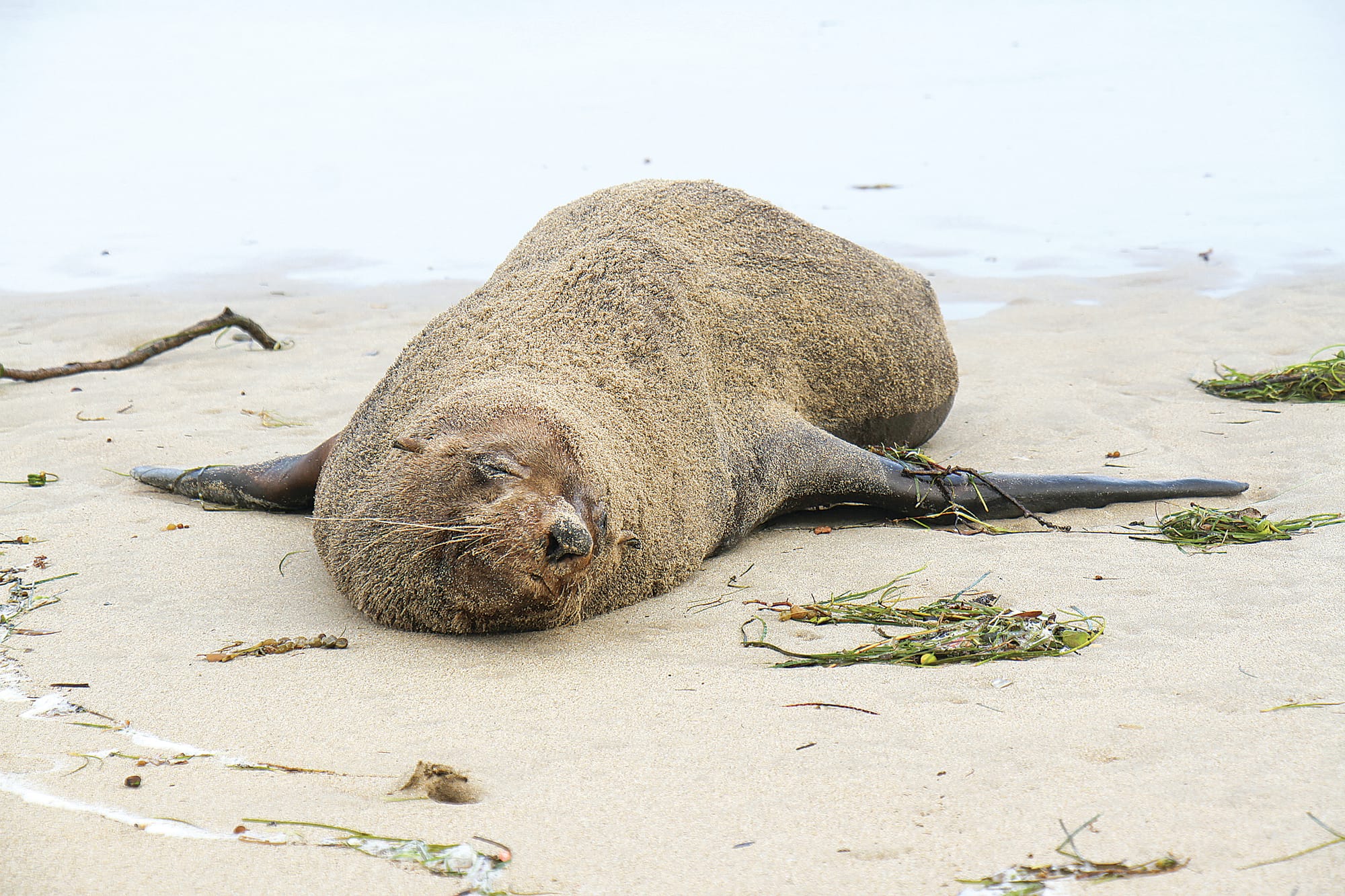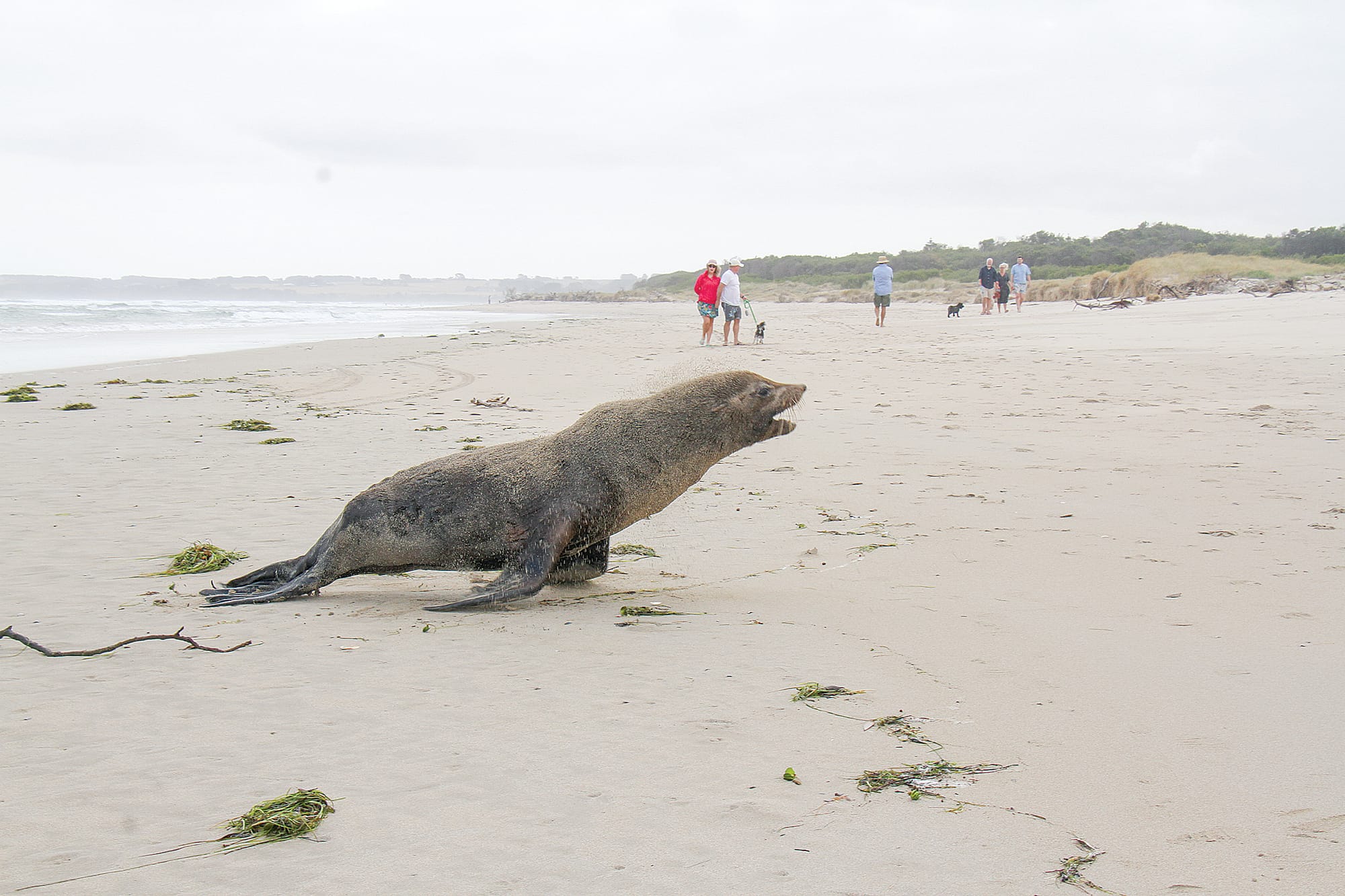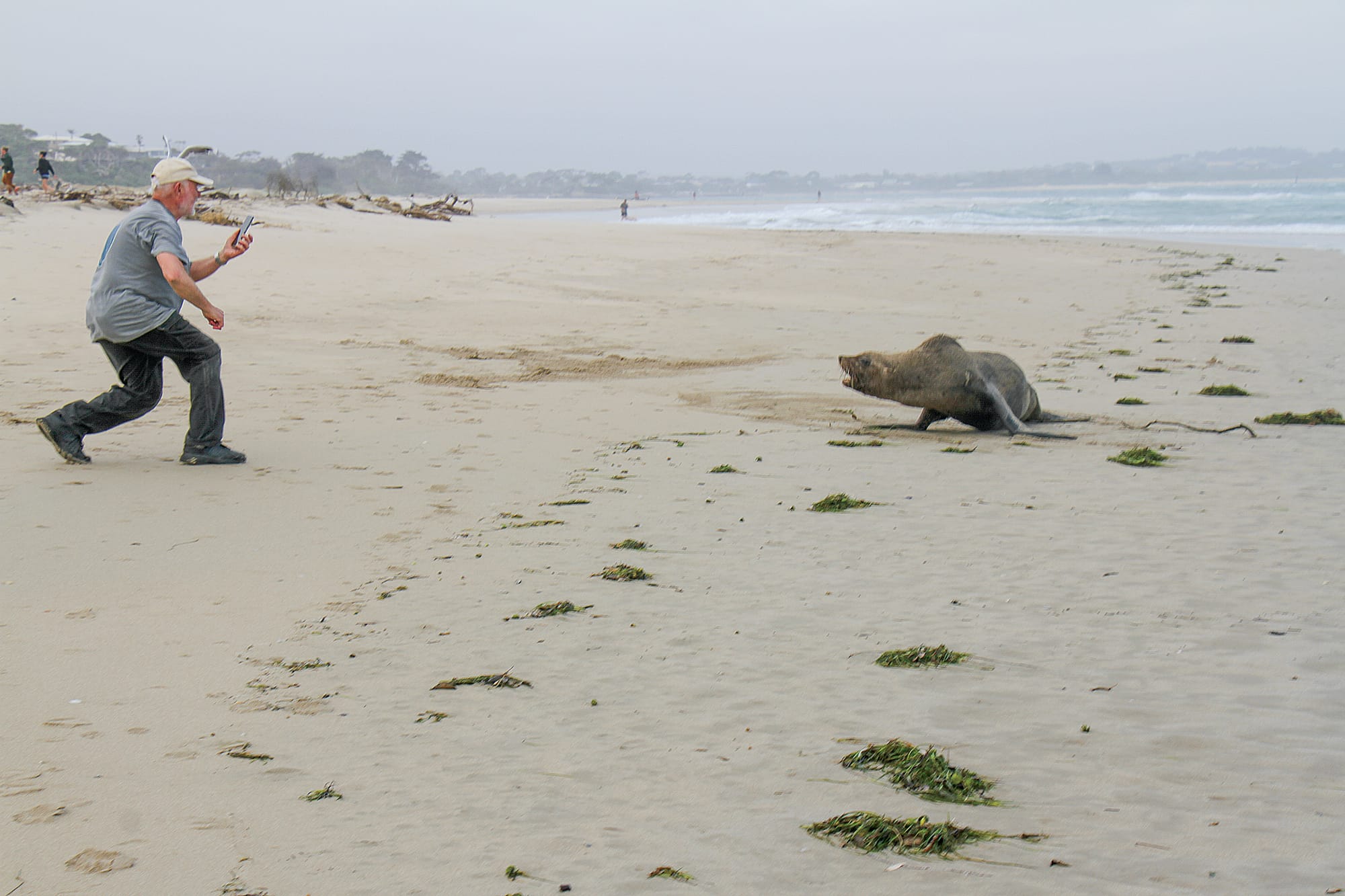Australian Fur Seal challenges beachgoers at Inverloch
BEACHGOERS at Inverloch quickly discovered a seal’s bark can be worse than its bite when a large male Australian Fur Seal beached itself at Norman Point. The largest of all fur seals and one of the world’s rarest seal species the Australian Fur...

BEACHGOERS at Inverloch quickly discovered a seal’s bark can be worse than its bite when a large male Australian Fur Seal beached itself at Norman Point.
The largest of all fur seals and one of the world’s rarest seal species the Australian Fur Seal can spend weeks at sea feeding.
Sammy the Inverloch fur seal seemed to have done just that.
Inverloch lifesavers called to ensure Sammy was not injured or in any danger speculated the seal may have overeaten on plentiful schools of fish in the area.
Beachgoer Chris Ball of Kongwak who sat protecting the seal for over three hours said the seal was probably exhausted.
“A pod of dolphins was in the area earlier in the day and I saw a shark fin” said Chris.
A large Bluethroat Wrasse or parrot fish washed up on the surf beach nearby would indicate a possible feeding frenzy by dolphins and seals.
Adult fur seals can weigh up to 100kg with the male being dark-grey to brown with a paler underside and a mane of coarse hair over the neck and shoulders.
Sammy’s large eyes, pointed face, whiskers, forward facing flippers and very sharp teeth similar to a bear are typical of Australian Fur Seals.
One tourist taking close-up photos of Sammy found fur seals can move very quickly.



Forced to scamper up the beach when Sammy lunged forward, teeth bared barking loudly Ivan of Coburg was obviously shaken.
Australian Fur Seals are very skilful hunters with keen senses and eyesight.
Normally fur seals prefer remote islands, rocky ledges and pebble beaches to rest on but for Sammy Norman Point seemed just fine.
Far from being camera shy Sammy happily lolled around on the beach entertaining beachgoers until early evening.
Chris Ball a carpenter and full-time carer for his mother last saw a seal at Inverloch eighteen months ago.
“He was very good with the many curious children passing by,” said Chris.
Wildlife Victoria advises that it is important for both people and dogs to keep away from Australian Fur Seals.
“When taking your dog for a walk you need to make sure that you keep at least 50 metres away from a seal on land or in the water.”
For more information on protected wildlife go to wildlife.vic.gov.au





